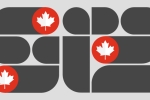Tax Insights: GST/HST & QST filing deadlines for financial institutions (and businesses that are de minimis financial institutions)
April 20, 2022
Issue 2022-16
In brief
Most GST/HST and QST registrants that are a financial institution are required to file an Annual Information Return and those that are a selected listed financial institution (SLFI) are required to file a SLFI Return. These returns must be filed within six months of a registrant’s fiscal year end. Registrants with a December 31, 2021 year end must file these returns by June 30, 2022.
Banks, credit unions, insurers, security dealers, insurance brokers, public trustees, trust and loan corporations, investment plans and regular businesses that are a de minimis financial institution as a result of having financial revenues that exceed certain thresholds may be affected.
Because the definition of “financial institution” is very broad, all GST/HST and QST registrants should:
- determine whether they are required to file an Annual Information Return and/or a SLFI Return
- consider whether any past non-compliance should be rectified by filing a voluntary disclosure
Certain banks, insurers and security dealers, whose input tax credit (ITC) claims exceed certain thresholds, are also required to apply to the Canada Revenue Agency (CRA) to use a particular allocation method; the deadline to apply is 180 days before the first day of their fiscal year.
In detail
Requirement to file an Annual Information Return
“Reporting institution”
A “reporting institution” must file an Annual Information Return within six months of its fiscal year end. A person is generally a “reporting institution” if:
- it is a “financial institution” at any time in the fiscal year
- it is a “registrant” at any time in the fiscal year, and
- its taxable income under the Income Tax Act for the last taxation year exceeded $1 million
“Financial institution”
A person can be a “financial institution” because:
- of the type of business it operates, or
- it is a “de minimis financial institution” as a result of the amount of financial revenue it earns in a particular year
A person who is a financial institution by virtue of the type of business it operates is generally a “listed financial institution.”1
This includes a business that has filed a section 150 election (under the Excise Tax Act [ETA]) and is deemed to be a financial institution.
De minimis financial institutions
There are two ways that a person can be a de minimis financial institution:
Test 1: Financial revenue exceeds thresholds
A person can be a financial institution under the de minimis rules if the financial revenue (i.e. the interest, dividends and separate fees or charges for financial services) it:
- earned in the previous taxation year from supplying a financial service, and
- included in computing its income,
exceeded both:
- $10 million (prorated for short taxation years), and
- 10% of revenues earned from most supplies
Financial revenue excludes interest and dividends from a related corporation, and proceeds derived from the sale of financial instruments.
Test 2: $1,000,000 in interest income from lending money or granting credit
Alternatively, a person can be a de minimis financial institution if the total interest, fees and charges earned from lending money, granting credit or issuing credit cards in the preceding taxation year exceeded $1 million (prorated for short taxation years). However, interest earned from guaranteed investment certificates, demand deposits and term deposits with maturity dates that do not exceed 364 days from the day on which the deposit is made are excluded from the interest calculation. Interest from related corporations is also excluded.
Penalties
For each line item on the Annual Information Return, a person may be liable for a penalty2 equal to the lesser of:
- $1,000, and
- 1% of the difference between the actual amount that should have been reported and the amount reported and, with respect to amounts that are not reasonably ascertainable and are being estimated, 1% of the total amount of tax collected and ITCs claimed by the financial institution in the fiscal year
Because the Annual Information Return has numerous line items, total penalties could exceed $250,000 for each fiscal year for certain financial institutions.
Requirement to file a SLFI Return
A SLFI is required to adjust its net tax in accordance with the “Special Attribution Method” (SAM) Formula3 by filing a SLFI Return. The SAM Formula and the filing of the SLFI Return ultimately result in a SLFI paying a blended rate of GST/HST and QST based on its “provincial attribution percentage,” which varies depending on the particular class of listed financial institution (e.g. the rate of tax paid by an investment plan is based on the percentage of unit holders that reside in the “participating provinces” and Quebec).
“Selected listed financial institution” (SLFI)
A SLFI is a listed financial institution that is:
- described in subparagraphs 149(1)(a)(i) to (x) of the ETA, and
- a prescribed financial institution
A bank, credit union, public trustee, insurer, security dealer, insurance broker, trust and loan corporation and investment plan:
- is generally considered to be a listed financial institution that is described in subparagraphs 149(1)(a)(i) to (x), and
- will be a prescribed financial institution if it has a permanent establishment (PE) in a participating province (e.g. Ontario) or Quebec, and a PE in any other province (e.g. British Columbia)
What constitutes a PE depends on the particular classification of the listed financial institution. For example:
- an insurer is deemed to have a PE in the provinces where the insured resides
- a bank is deemed to have a PE where the deposit holders and borrowers reside
- an investment plan is generally deemed to have a PE where its unitholders and beneficiaries reside
Requirement to obtain CRA’s authorization to use ITC allocation method
There are ITC allocation rules in section 141.02 of the ETA that apply to all financial institutions, including special rules for a “qualifying institution.” A qualifying institution is limited to banks, insurers and security dealers that have claimed, in each of their two preceding years:
- ITCs on “residual inputs” that exceed $500,000, and
- a prescribed percentage (10% for insurers, 12% for banks and 15% for security dealers)
These institutions are required to apply to the CRA to use a particular ITC allocation method; the deadline to apply is 180 days before the first day of their fiscal year. If the CRA does not authorize the qualifying institution to use its particular allocation method, then its ITC claims on residual inputs may be limited to the prescribed percentage.
The takeaway
GST/HST and QST registrants should determine if they are a financial institution and, if so, what particular class of financial institution. If they are a financial institution that is registered, they will generally have to file an Annual Information Return.
As there is generally a four-year limitation period for the CRA to assess penalties for failing to file an Annual Information Return, as well as discretion to waive or cancel the penalties, GST/HST and QST registrants should:
- rectify any past non-compliance, and
- consider initiating a voluntary disclosure, if eligible
1. Referred to in paragraph 149(1)(a) of the Excise Tax Act (ETA).
2. Subsections 284.1(1) and 284.1(2) of the ETA.
3. Section 225.2 of the ETA and section 433.16 of the Act respecting the Québec sales tax.
Contact us


Contact us























